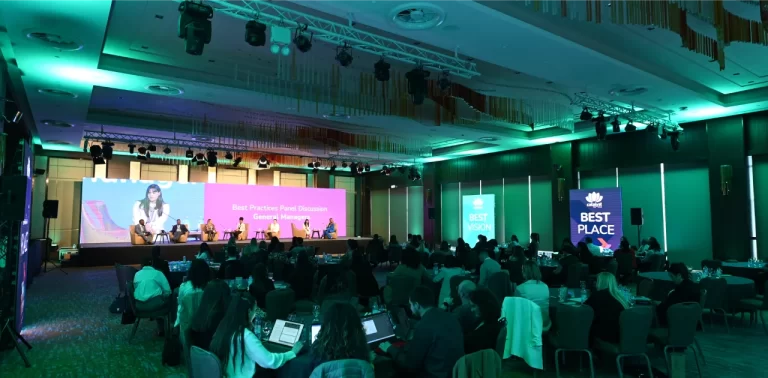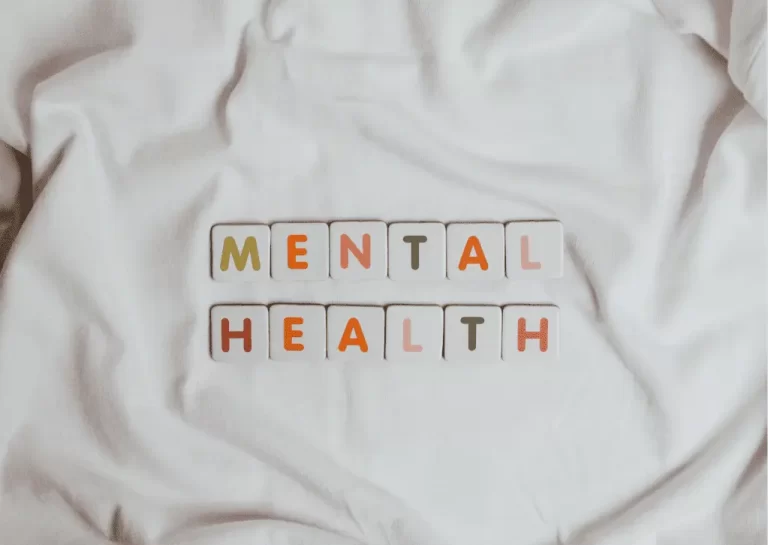Key Takeaways
- What Is PECS: PECS is a picture-based communication system designed to help people express their needs and preferences.
- Who Benefits from PECS: It supports people with limited or no verbal communication, especially those with autism or related developmental needs.
- How the PECS System Works: People learn to exchange pictures to communicate, moving through carefully structured teaching steps.
- The Six Phases of PECS: Each phase builds on the last, starting with basic requests and progressing to sentence-building and answering questions.
In a world where verbal communication becomes more challenging every day, there is a huge need for an effective functional communication system. Over the past couple of years, the number of children needing additional support in speech development has tripled and is expected to rise. That’s why we have implemented innovative augmentative and alternative communication systems in our daily care practices. Showing remarkable results with autistic people and people with a learning disability, ADHD and global development delay, PECS is the fundamental step in improving people’s communication and social skills. Learn more.
What is PECS?
The Picture Exchange Communication System (PECS) supports non-speaking people to develop speech and expressive communication skills in a simple and effective way. PECS is especially beneficial for children who are non-verbal, have minimal or unclear speech, or lack an effective way to communicate at home, preschool, or school. It has proven effective for people of all ages with a wide range of communication, cognitive, and physical challenges. In some cases, learners who use PECS may also begin to develop spoken language.
Communication is achieved by using cards that feature pictures, symbols, words, or photos to make requests, express thoughts, or respond to questions. Some people may use PECS temporarily as their speech develops, while others may rely on it for a longer period.
For PECS to be effective, certain foundational skills, or “building blocks,” help support a person’s ability to use the system successfully.
- Social engagement: The child should have a desire or interest in interacting and communicating with others.
- Vision: Adequate eyesight is necessary to see and distinguish between pictures or symbols.
- Physical ability: The child needs sufficient mobility and motor control in their arms and hands to pick up and exchange cards.
- Motivation: A strong drive to request desired items or activities is key for initiating communication.
- Sequencing and planning: The child should be able to follow and perform multi-step tasks in a logical order to reach a goal.
- Executive functioning: Skills such as reasoning, planning, and self-regulation support more advanced communication tasks.
- Language comprehension: Understanding spoken language helps the child make sense of requests and responses within communication.
- Problem-solving: The ability to recognize challenges, consider possible solutions, and act to resolve them supports adaptive use of PECS.
Who Benefits from PECS?
The Picture Exchange Communication System (PECS) can be helpful for anyone, regardless of their age. Although most research and practical use has centered on children, PECS is not limited to them- it can be just as effective for teenagers and adults. If you or someone close to is non-speaking and faces challenges with spoken communication, PECS can offer a meaningful way to express needs, make choices, and connect with others. It’s a flexible approach that can be tailored to fit each person’s unique communication style.
In some cases, people may begin with PECS and later transition to other forms of augmentative and alternative communication. This approach can benefit anyone with challenges in spoken language, including people with dementia, traumatic brain injuries, or various developmental delays.
How the PECS System Works
PECS involves multidisciplinary approach provided by a multidisciplinary team of experts in behavioural analysis and positive behaviour support. The goal is to establish effective communication with the person and can be used at home, in classroom or in care services.
PECS teaches people to use pictures to communicate their needs, wants, and current feelings. For example, if someone wants a toy, they can hand over a picture of it to another person, who then gives them the toy.
Beyond making requests, PECS also helps people express how they’re feeling in the moment- whether they’re happy, sad, frustrated, or in pain. A key goal is to support spontaneous communication, encouraging people to take the initiative to express themselves. From the start, it builds essential skills like approaching others and starting interactions independently through simple picture exchanges.

The Six Phases of PECS
The Picture exchange communication system follows a step-by-step approach, split into six stages (see the infographic below). It starts with the person using one picture to ask for something they want. Over time, they learn to pick from different pictures and put them together to form longer messages. All the pictures and sentence strips are kept in a small communication book, where they’re attached with hook and loop fasteners so they can be taken out easily when the person wants to say something.
Phase 1 – How to Communicate
People use pictures to ask for the things they want, which involves a shared interaction with a caregiver who supports them in this two-way exchange. This process encourages meaningful back-and-forth communication and helps build stronger interaction skills.
Phase 2: Distance and Persistence
People begin to use their pictures across a variety of settings—with different people, in new places, and from increasing distances- while also learning to stick with the exchange until their message is understood. This helps strengthen their ability to communicate in everyday situations, even when challenges arise.
Phase 3: Picture Discrimination
People learn to choose between two or more pictures to request something they’re interested in. These pictures are kept in a portable PECS Communication Book, making it easy to carry and use in different settings.
Phase 4: Sentence Structure
Requesting with the phrase “I want”: People learn to build simple sentences by placing an “I want” picture first on a sentence strip, followed by the picture of the item they’re asking for.
Phase 5: Answering Questions
At this stage, people begin to answer when asked questions like “What do you want?” by using their pictures to respond. This helps develop more natural, back-and-forth communication and builds confidence in expressing choices when prompted.
Phase 6: Commenting
At this point, people using PECS begin to respond to ‘wh-‘ questions connected to their senses. They answer questions like “What do you see?”, “What do you hear?”, and “What is it?” by creating sentences with phrases such as “I see,” “I hear,” “I feel,” or “It is a.” This helps them express more detailed information and develop more flexible communication skills.
Benefits of PECS
With PECS we aim to provide a practical and meaningful way to communicate. While its main purpose is to establish a functional picture-based communication system, research has shown that many people begin to develop speech after using PECS for over a year.
Data from the Delaware Autistic Program is particularly encouraging, showing that 76% of people using PECS went on to use speech- either as their main form of communication or alongside the picture system. PECS has also proven helpful for people who have speech but may not use it effectively.
Reassuringly, studies confirm that using PECS does not delay or prevent speech development.
Improving Intentional Communication
PECS supports the development of clear, purposeful communication, helping people express their needs independently. This reduces frustration and strengthens their ability to connect with others.
Reducing Behaviours of Concern
When people have no way to express what they need, it can lead to frustration and behaviours that are hard to manage. PECS offers a simple, reliable way to be understood-helping people feel heard and reducing the need to communicate through distress.
Supporting Language Development
PECS lays the groundwork for language by teaching how communication works- starting with pictures and gradually building towards sentence structure. As people learn to make requests, answer questions, and engage in conversations, many begin to use speech alongside or instead of pictures. It creates a strong foundation for understanding and using language in everyday life.
Promoting Social Interaction
PECS encourages people to initiate communication, helping them learn how to approach others to make requests or share something of interest. This supports more confident, natural interactions with family, carers, and peers.
Implementing PECS in Care Planning
Including PECS in care planning ensures that people with complex communication needs have a clear, consistent way to express themselves across different settings. For example, someone might use their PECS book to ask for a favourite activity during a day service session, then use the same system at home to request a snack.
By building PECS into daily routines- whether at mealtimes, during personal care, or in social activities- carers can respond more effectively to what the person wants or needs. This promotes independence, reduces frustration, and helps tailor support in a way that truly reflects the person’s preferences.
Catalyst Care Group Implements PECS in Their Support
At Catalyst Care Group, we have integrated the Picture Exchange Communication System (PECS) into our support for people with autism spectrum disorder and related developmental disabilities. Through specialised PECS training, our carers and support teams are equipped to use this communication method effectively within a Positive Behaviour Support (PBS) framework.
This therapeutic and multidisciplinary approach means communication strategies are tailored to each person’s unique needs, blending PECS with other supports to encourage meaningful connection and reduce frustration.
To make communication more accessible and engaging, Catalyst uses multimedia tools such:
- Social stories
- Video avatars
- Talking Mats
These visual aids help explain social situations and communication expectations clearly, supporting learning in a way that feels relatable and motivating. By embedding PECS within personalised care plans and alongside other therapies, we ensure that every person’s communication system is strong, flexible, and suited to their daily life and goals.
If you are looking for a communication approach that can be personalised to your loved one’s needs and supported by a caring, skilled team, Catalyst Care Group is here to support you.
For more information, contact us today or make a referral.













